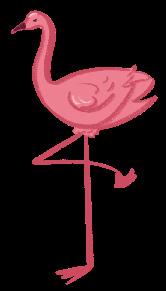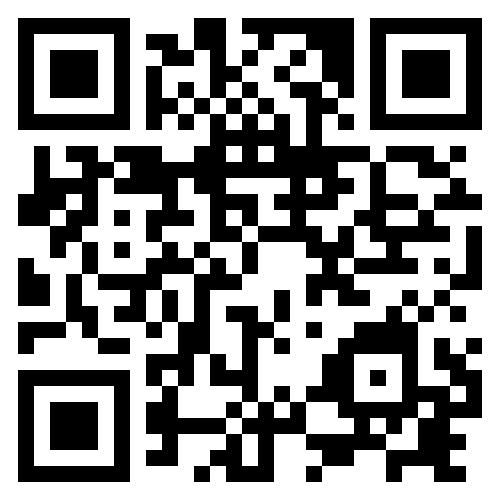




| Julia Gronert STAFF REPORTER
ollowing the death of Pope Francis on Easter Monday, the cardinals of the Catholic Church began one of the most important processes in the Church, choosing the next pope. On May 9, Robert Prevost, the first American pope, was chosen to lead the world’s largest religion.
This was a highly watched conclave, drawing attention from Catholics and others alike, with people wondering what the change in leadership would bring. Francis was widely regarded as one of the more liberal leaders of the Catholic Church, especially in the Church’s view on LGBTQ+ marriages, women, divorce and marginalized groups. Many conservative members of the Church believe that he was not strict enough on Church doctrine, while some liberal members believe that he did not do enough to open the Church to all. “There’s a lot of balance that needs to be struck there, when you’re meeting such a big group of people, there’s a lot of diverse viewpoints,” said senior Sarah Pederson, who was closely following the process.
After the death or resignation of a pope, cardinals from across the world gather for the election process known as a conclave. All cardinals under the age of 80 are sequestered, a term used to describe a very secretive and ritualistic voting procedure within the Sistine Chapel. The conclave must be-
1. Current pope dies
2. Conclave must start 20 days after death
3. High cardinals vote using ballots until new pope is elected
4. White smoke signals a new pope has been selected
gin within 20 days in absence of a pope. They perform several votes each day, the results of which are communicated to the public only through a special chimney installed in the Chapel. The votes are burnt with a special chemical compound that changes the smoke’s color to either black or white. If the vote was inconclusive, the smoke is black, and when the new pope is chosen, it is white.

Many people had their own ideas for who they wanted as pope, with some popular contenders being the more conservative cardinal Robert Sarah or the more liberal leaning cardinal Luis Antonio Gokim Tagle. “We haven’t seen many [people of color] as popes, so I think it would be cool if there was a person of color,” said Catholic senior Gabriella Peterson. There have only been three non-white popes, with the most recent one ending his papacy in 496.
The conclave lasted only two days, which follows the recent trend of short papal elections. Conclaves have had an
average length of three days since 1900. On the fourth ballot, Chicago-born Robert Prevost was elected as the new pope, and appeared before crowds at St. Peter’s Basilica, taking on the name of Pope Leo XIV. He is an Augustian, an order of Catholicism, focused on modesty and charity. Pope Leo is widely viewed as a centrist within the Church. He holds some stances within the Church regarded as more conservative, like that women will not be allowed to be ordained as priests. He also upholds many of the Church’s traditional values, stating that marriage must be between a
man and a woman, despite Francis allowing blessings for same sex couples under special circumstances. However, he aligns with many of Francis’s liberal views on migrants and the poor. In his first Sunday blessing, he called for a ceasefire in Gaza and an end to war in Ukraine. He also oversaw the reforms allowing women to serve on the Vatican board, one of the most significant changes that Pope Francis made in his term. Looking to the future, many expect big things out of Pope Leo, standing at a crossroads between tradition and modernity, faced with uniting a divided world.
| Zariyah Howell STAFF REPORTER
ig changes are coming to Mounds View High School starting in the 2025-26 school year. The Mounds View Public Schools district will be implementing a new graduation requirement that all students have to take Personal Finance. The Minnesota Board of Education voted to mandate the course in 2023, aiming to provide students with the basics of financial literacy and help them prepare for life after graduation.
The curriculum was created by the teachers in the Business Marketing and Careers (BMAC) wing. The class covers budgeting, investing and financial goal-setting, teaching students strategies to manage money beyond just saving. Guest speakers also come in to give advice to students based on their financial experiences. The students participate in activities such as writing a check, labeling a bank statement and learning the evolution of currency.
Personal Finance is currently a one-semester course that counts as an elective credit. Next year, it will be considered a core class. While there is already a Post-Secondary Enrollment Option (PSEO) of the class
that is offered, some Mounds View administrative staff believe there is also a possibility of an online or hybrid version of the course. “Right now, there is a district operational goal for this year to analyze the current online course offerings that we have and analyze the impact of those [courses] and figure out where we can offer more potentially an online and hybrid course. So, that is a consideration for Personal Finance that has not yet been made,” said Associate Principal Benjamin Chiri.
Business education teacher Philip Schut is currently teaching the course and tries to make it engaging for students. “I try to meet students where they’re at, treat them like adults, treat them like human beings, and that tends to help with engagement, even if the topic is not really all that interesting,” he said. Schut believes that everyone should have some kind of financial literacy and that education around the topic should be more accessible. He also tries to be mindful in regard to other students having different methods of learning. “It doesn’t look the same for everybody,” he said. “I think there’s a lot of diverse students in this school, and we need to be cognizant of the fact that obviously not ev-
erybody learns the same way and obviously everybody has a different prior knowledge coming in.”
Manystudents who previously took Personal Finance and found it to be a class worth taking. “My favorite part was the final project we did at the end of the semester. It allowed us to apply everything we had learned, from budgeting to saving, managing credit and planning for future expenses,” said senior Fatma Rashed. The current Personal Finance students feel a sense of normalcy taking the class. “It is an informative course, and I recommend taking it regardless of who you are and what your comfort in finance is. It’s more than just saving and budgeting,” said senior Jayda McAdams.
With the new graduation requirement rolling out next year, Personal Finance is set to become a key part of every Mounds View student’s high school journey. This course gives students the tools to manage their own finances and prepare for economic independence. By equipping students with real-world financial skills, the class helps them make informed decisions that will benefit them well beyond graduation.
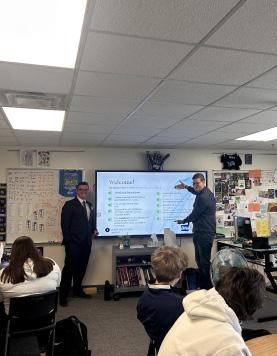
| Sinim Dhugma STAFF REPORTER
n only a few months, the current presidential administration has undoubtedly made noticeable and consequential changes to the United States government. But the shifts in attitude do not stop with executive orders. Increasingly, racism has begun to make its way back into everyday interactions in America. Disguised as a joke, a backhanded compliment or a passing comment, racism is becoming our new normal.
Dating back to colonial times, with the ethnic cleansing of Native populations and the forced enslavement of Africans in the Transatlantic Slave Trade, America was built on racism and white supremacy. Throughout the country’s history, significant work has been done by several movements and organizations to combat racism, like the Civil Rights Movement. However, the existence of such movements has convinced some people that racism must no longer be a problem. This couldn’t
be further from the truth as both covert and blatant racism continue to plague American conversations, media and political actions.

Since reentering office in January, President Donald Trump has made numerous claims and taken actions discouraging and even condemning diversity, equity and inclusion (DEI). Earlier this year, Trump blamed hiring initiatives that promote DEI for multiple plane crashes, claiming they occurred due to unqualified minorities receiving unfair advantages under previous presidential administrations. Despite a complete lack of evidence to support this seemingly made-up correlation, there has been widespread belief (especially among Trump’s supporters) that DEI means inequality for white people. In reality, DEI programs do not involve hiring people without appropriate qualifications; they aim to provide minority applicants—who have equal skills— with the same opportunities as their more privileged counterparts.
| Suha Sharif STAFF REPORTER
ike most students, I’ve submitted work after the due date. And in those times that I have, I was stressed and submitted lower quality work. Although Mounds View’s late work policy was meant to give students time to catch up on homework, reduce their stress and submit quality work, our late work policy is not really helping students.
In the past, there were different categories to determine due dates at Mounds View, although as of this year teachers usually work in teams to determine the deadlines. Teachers can use their discretion to decide what date an assignment or assessment is due and the expiration date. This would be different

for students who have extenuating circumstances that prevent them from completing their work. Teachers still have flexibility for a given struggling student, but still generally hold kids accountable. This allows teachers to hold the deadlines they’ve created while making accommodations for those who cannot meet those deadlines.
However, negative emotions can cause people to overthink and overestimate the task at hand, making them avoid it for fear of failing and turn to an easy yet temporary solution: procrastinating. Procrastination, a problem many high-schoolers grapple with, is caused by a variety of reasons from anxiety to low selfesteem. It leads people to delay their tasks and continuously
As proven with Trump, politicians and celebrities can gain attention very easily, but even regular people’s actions can generate a lot of buzz. In late April, a video was posted of a white woman calling a Black child a racial slur on a playground in Rochester, MN after the child allegedly took something from her son. The video quickly gained millions of views and a wide range of reactions. Initially, the woman faced backlash, to which she responded by doubling down and saying that she simply “called the kid out for what he was.” Then, she decided to raise money on GiveSendGo, a Christian crowdfunding platform, to “help [her] protect [her] family.” Not only did the woman raise over $700,000, she also received numerous “supportive” comments on the crowdfunding site, where people used equally (if not more) racist language as she did in the original video. Contrary to the proudly racist supporters, some people claimed to have donated to the GiveSendGo as a way to take a stand against “cancel culture.” My question is: How can you care more about fighting cancel culture than being anti-racist, or
even just… not racist? That is my biggest concern, that there are actually people who spent their money to stand behind obvious racism in 2025.
just get off the app. People will find a way to rationalize their actions and be dismissive, refusing to address the fundamental issues with their actions.
Sinim Dhugma, Staff Reporter
A common response to calling out examples of racism today is constant dismissiveness; oftentimes people use it to try to rationalize casual racism. For example, if you open the comment section of an Instagram Reel where the target audience is teenage boys, chances are you will find several nonBlack teen boys repeatedly using the n-word. Now, if you try to label these comments as racist, you’re told that you’re dumb, it’s just a joke, you’re being sensitive and you should
Even though people disregard casual racism on the internet as unimportant in real life, it is actually very relevant considering the number of people, especially easily impressionable teenagers, who use social media and consume or even partake in posting those comments and other racist content. Passing it off as "a joke" is incredibly serious as it promotes a narrative that racism is something to be perceived as normal and funny. In actuality, it is just a way to mask real racism as an online front.
Through misinformation and wrongful justification, American society perpetuates an endless cycle of racism. If people keep pretending not to notice how normal racism has become, it will shamelessly continue and only get worse. We must call out racism where we see it, or we will slowly lose the generations of progress made by those who did have the courage to stand up for what is right.
push them back. In a study done by the Sophiahemmet University, researchers saw a correlation between procrastination and higher levels of stress and anxiety. It was also correlated with poor lifestyle behaviors and worse levels of psychosocial health factors. With these factors at play, this can cause a cycle of repetition of procrastination, being stressed and procrastinating yet again.
Without real consequences for students’ actions, the current late work policy may unintentionally endorse procrastination in students. While this policy was enactedto address struggling students who may have extenuating circumstances, it is instead applied to all students, regardless of whether it’s appropriate or not. This can cause them to never learn healthy study habits and motivation for their work, becoming detri-
mental to their education later on when they are expected to complete homework no later than due date, which oftentimes is also the expiration date in college. Having a strict deadline can help students to be less stressed and foster better habits, which leads to higher quality work and also allows them to learn better.
Rather than allowing all students to submit late work, students could be required to request extensions which would be at the discretion of the teacher to approve. This could allow students who have special circumstances to submit their work without having points deducted and would create a solution for students who do not have a reason to procrastinate. Another option could include having a portion of students’ grade based on adhering to deadlines, having neat work and being able
to successfully follow instructions. Instead of utilizing a late work policy for all, there could be a focus on students who need extra time and have other confounding factors that prevent them from turning in their work. This would stop students from building negative habits while helping students who do need extensions.
While allowing students to submit late work might seem the right thing to do, it ends up doing more harm than good for the students by teaching and encouraging students’ bad habits, lowering the quality of their work and erasing the importance and value of deadlines. By requiring students to submit work in a timely manner, they are set up for success both in high school and beyond.
| Isabella Kunc STAFF REPORTER
t is not possible for Minnesota State employees to retire on a holiday, thus, Administrative Assistant Terri Bergstrom is planning to retire on the first day of the 2025-26 school year and the day after Labor Day on Sept. 2, 2025. Bergstrom began working at Mounds View 11 years ago in the College and Career Center. She became a bookkeeper about a year later. Bergstrom really enjoys her job and the freedom and movement it allows her. “I love the job I do. I love it.

I’m a bookkeeper, so I submit all of the invoices to the district.
The district takes care of all of the paying of bills. I just have to get everything submitted. I order for the teachers. I do the pick up,” she said. “And I like to move around, so I deliver boxes. I’m in and out of my office all day long.”
She also likes the community and has many fond memories of her time at Mounds View.
“We have a great staff. The gals that I work with here in the office are great. We all get along really well. In the summertime, when there’s only three of us
| Carter Ballman STAFF REPORTER
Math teacher Ev Bjork retires at the end of this school year.
Bjork’s teaching career started at Bloomington Kennedy High School in 1980, and after three years of teaching, she became an actuary, where she analyzed the financial risks of business decisions. Then, she did computer consulting and was a stay-
| Carter Ballman STAFF REPORTER
Family and consumer science teacher Julie Coopet plans to retire at the end of this school year. Coopet began teaching in 1982, initially teaching for a year at Stillwater High School. In the following five years, she got a job at Minnegasco, a natural gas utility company as a home economist before eventually returning to teaching in 2002 at Mounds View High School.
Coopet didn’t become a teacher with just teaching in

here, it’s really lowkey and we enjoy it,” she said.
While many employees retire because they are done working or want more free time, Bergstrom retired for a more unexpected reason. “I commute 35 miles one way. So 70 miles a day times five — I’m tired. If this job was closer to my house, I’d still be working. But I’m tired, the drive is terrible. Old highway 10 [and] the construction’s terrible. So that’s the reason. That’s it,” she said.
This somewhat abrupt end has caused some negative feelings in Bergstrom and worries about what will come next.
“I’m anxious about it. It’s really nerve wracking. It’s hard.
at-home mom to four kids. She got back into teaching in 2009 at Woodbury High School, but after half a year, she moved to Mounds View and has been teaching here since. Originally, Bjork was not planning on continuing teaching, but she fell in love with the school environment. “It’s a job where if you make a mistake, it’s not life or death. Mistakes can just be funny, you just correct them,” said Bjork.
During Bjork’s teaching career at Mounds View, she has taught a number of classes in-
mind. “My high school experience was good. I enjoyed what I did, but the real reason was I wanted to coach, and so I coached gymnastics for 18 years here at Mounds view,” said Coopet. She also expresses her passion for guidance by judging gymnastics for The Minnesota Girls Gymnastics Officials Association (MGGOA) since 2013.
Throughout the years, Coopet has changed and developed the family and consumer science classes. When Coopet started at Mounds View, she
| Isabella Kunc STAFF REPORTER
panish teacher Katie Womack is an alumna of Pike Lake, Highview and Irondale, and she can soon add former Mounds View teacher to her list. She started teaching in 1992 at the Willmar school district and has been teaching for 33 years. “I’m glad I was able to get a job back in the district. I taught Spanish in the middle school way back in the day of Spanish 1 for all kids. And then in 2001, I came to Mounds View because they dropped the program,” she said.
But my husband is home. He’s been home for a few years now, retired, and I honestly never thought I’d be old enough to retire. I didn’t think I’d ever want to retire, so this is all new for me,” she said. “I probably will continue to work, just find something closer to home, something fun.”
Beyond everything, there will be a few things Bergstrom will miss about Mounds View and her time here. “I will miss my coworkers. I’ll miss staff. I’ll miss the routine of coming to work every day. I don’t get a ton of contact with kids, which is kind of a bummer. But it’s a good staff here,” she said.
cluding Intermediate Algebra, Geometry, Precalculus, AP Precalculus, AP Calculus and Algebra 3, a course that is no longer offered.
Bjork’s favorite part of teaching is working with students. “I feel like I connect with [students], and I feel like you can make a difference. You can see the difference you’re making,” said Bjork. She also may start tutoring to continue interacting with students. Bjork’s decision to retire followed the decision of many people in her personal life. “I

have four grandchildren and I want to spend time with them. Also, a lot of my friends are retired, and my husband’s almost retired,” said Bjork. Bjork plans to relax and enjoy her retirement. “I’m probably just gonna kind of kick back and just get caught up in my life. We just moved to a new house and things like that,” said Bjork. She also plans to travel to visit her sons in Colorado, but in her travels, Bjork will never forget her time at Mounds View.
taught Culinary Arts along with a course called Teen Cuisine. Since then, she has developed and added many classes to her roster including Intro to Culinary Arts, Culinary Arts Two and even classes like Housing and Interior Design and Child Psychology.
During her retirement, Coopet will work for Disney. “I had the opportunity four years ago to get a seasonal part time job at Disney World. And, you know, it’s the kind of thing where it’s just something I really enjoy,” said Coopet. Her job is to runDisney, a subsidiary of Disney sports focused on
Throughout her time, Womack has learned a lot, even as she taught a generation of students. “I have learned to be patient, to be flexible [and] to be fair, but firm,” she said. In passing advice down to new staff and future students, Womack believes in taking it one day at a time. “I have this tattoo on my arm that says, ‘no day but today,’ because tomorrow is unpromised. So just take it day by day, always remember that things will always get better and just [keep putting in] the effort in trying to make your day and other people’s day great,” she said.
marathons, getting the runners in the right groups before the marathon and helping the runners get to transportation away. Coopet is also planning on diving into her hobbies. “I want kids to get excited about plants, so I’m going to take a bigger role in the school gardens,” said Coopet, a Ramsey County master gardener. She also plans to get involved with the elementary school gardens. Although Coopet will not be teaching anymore, she will still be around the building helping with the gardens.
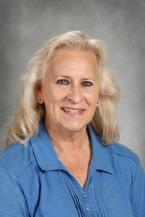
Her favorite part of her job is getting to spend time with her students as she says they keep her feeling young. “There are obviously good days and bad days. But when I first started teaching, I got my first paycheck and I was just like, ‘oh my gosh, I’m getting paid to do this.’ Every day is different. It’s just not the same old, you got different kids and different activities to do, and it’s just fun to hang out with the kids and teach them,” Womack said. While she may be retiring from Mounds View, Womack still has many plans, namely to live like a college student without the classes. “My best friend, we met in third grade, and
we’re still friends. After college, she moved down to New Mexico, and she’s also a teacher — fifth grade teacher. I’m moving down there, and I’ll be living two miles from her,” she said. “And I’m going to work as a waitress at Texas Roadhouse.” She is quite excited for her future plans and for a chance to take it easy. “I’m not saying this job isn’t fun, but it’s a lot of work. It’s a lot of stress. I just feel like it’s time for me now,” Womack said. “[Still,] I wouldn’t have changed [my time here] for anything. I have loved every second of being a teacher.”
| Via Yang STAFF REPORTER
Created in Mounds View’s StartUp Club, GirlEASE is an organization founded by juniors Kayleigh Shrom, Jayna Kavathekar and Ruhi Malgi. The startup was created to help girls at school have easier access to hygiene and safety products rather than going out of their way to make their own emergency pouches. “I really feel like girls need something to help them get through school because they know it can be really hard,” said Kavathekar.
The club started from the girls’ own struggles with forgetting items at home. The bag consists of daily essentials needed at school including menstrual pads, pimple patches, chapstick, stain removers and more. The outside zipper of the bag contains an emergency safety whistle for easy access.
The team did research and found that missing items in bags were a common occurrence within a teenage girl’s life, which increased the amount of stress already on their shoulders from school and other activities. “[We found] that nine
out of ten girls say that they’ve forgotten something that they need at school, and it leads to anxiety [and] embarrassment, and we just really want to make sure that every girl [feels] really confident going into school every day,” Kavathekar said. They purchase all of their items in bulk and place them into the bags in small amounts, which brings the overall production cost to under $15 and the selling price to $20. The girls assemble the kits individually once they are ordered online. After the kits are assembled, they are shipped to the customer.
This year, GirlEASE had a pop up during the Mean Girls production done by the Mounds View High School Theatre program. They sold ten kits during the three-day period, making around $200.
At the beginning of the school year, GirlEASE won $3,000 for their company at the Junior Achievement State Competition, with the prize money coming from a bigger pool of multiple companies. The startup was judged on a presentation where the girls discussed their journey on creating the
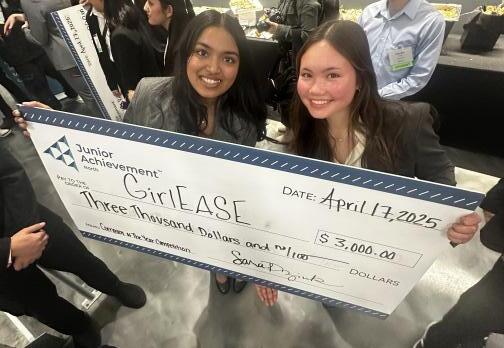
“[We found] that nine out of ten girls say that they’ve forgotten something that they need at school, and it leads to anxiety [and] embarrassment.”
company, its growth and their new gained knowledge from starting the club. The money earned has been put to developing and producing more kits.
To continue helping girls with their kits, the club decided to donate 10-20% of their profit to Period Kits Minnesota, an organization that donates menstrual products to women in need. “Our school is really lucky [that the state] provides period products for us, and we realized that not everybody has that … it’s a thing you need, it’s a necessity, but it’s not really
treated like a necessity by the government,” said Shrom. In the future, the team hopes to continue with GirlEASE and keep selling their products to reduce the risk of hygiene mishaps. The girls also hope to compete with GirlEASE on the national setting and further promote their cause. “We really want to raise awareness for [access to hygiene products] because that’s something that’s really important to us. We want no one to have to go without access to products that they need,” Kavathekar said.
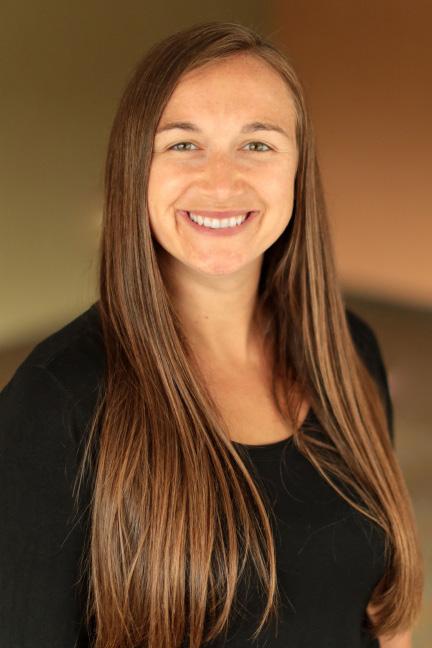
| Lillian Landberg STAFF REPORTER
practitioner survey from the American Psychological Association revealed that, now more than ever, people are searching for mental health counseling. This national crisis extends into high schools across the country, including Mounds View.
School therapist Carolyn Babekuhl and clinical intern Amy Watkins make up the Mounds View mental health department, offering counseling to Mounds View students.
Both Babekuhl and Watkins handle student counseling. “I have worked with a small number of students one on one, and then occasionally worked with staff as well,” said Watkins. A graduate student of the University of Minnesota, Watkins moved to the Twin Cities from Oregon after earning her bachelor’s degree in community health education. While studying for her master’s degree in social work, Watkins became employed at the Northeast Youth & Family Services clinic.
For decades, the clinic has partnered with the Mounds View School District, as well as three additional districts, with the job of bringing accessible counseling services to elementary, middle and high school students. “I think it’s probably
within the last 10 years that we’ve actually had therapists embedded in the school,” said Babekuhl. “The school provides me a space to work and knows that I sometimes go by different rules than they do … because I am employed by the clinic and not by the school.” Students who wish to meet with Babekuhl or Watkins often are referred to them through their deans, parents or other trusted adult figures.
Through this referral, Babekuhl will meet with these students anywhere from once per week to once per month, with walk-in appointments accepted. Even over the summer, many students continue their long-term appointments with her. “It’s an important service that [the school] wants their students to be able to access. So I am scheduled to be here every day that there is school and am able to meet when there’s not school,” Babekuhl said.
With the clinic’s goal to help students and the overall community, Babekuhl and Watkins see many recurring issues within Mounds View. “I hear from not just the students I work with, but the overall anxiety with school, grades, making friends, stress of what’s after high school, transitioning from middle school to high school, just everyday life,” Watkins said.
“I am scheduled to be here every day that there is school and am able to meet when there’s not school.”
Within these meetings, there are many success stories. The increase in mental health awareness has resulted in a healthier student body. “There’s nothing better when you have somebody who’s coming up to you and they’re really suffering, and then they’re able to make change for themselves and feel like they’re doing OK,” Babekuhl said.
Even with the accessibility for mental health counseling, life is still stressful for many students. Babekuhl aims to help students recognize and manage stressful situations on their own. “I tell students things aren’t ever going to be perfect. There’s going to be other things that come along, but if you can gain some skills where when things do happen, you know what to do about it,” Babekuhl said.
When political activism meets comical media, the result is satire, a crude and often absurd way to challenge relevant issues and inspire progress in troubling times.
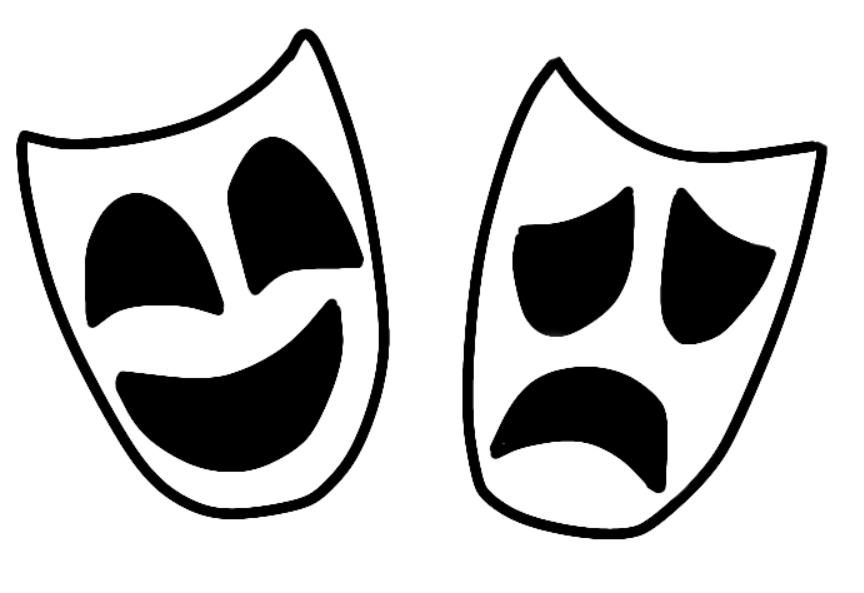
| Joey McVean SPREAD & NEWS EDITOR
Satire is not just comedy, but commentary. Beneath the laughter and exaggeration lies a powerful tool for social change. Through different types and different uses, satire in the media forces people to challenge their preconceptions and confront injustice.
Various types of satire exist, with each used to convey a message in a different way. Horatian satire, the most common form, uses comedy and humor to make fun of something in a comedic way. Animated American sitcom “Family Guy” is a great example in the way that they exaggerate certain circumstances and events to humorously point out the flaws in conduct. Juvenalian satire, which uses darker and deeper methods, can be seen in famous films like “American Psycho” and “Dr. Strangelove,” challenging ideas not through comedy but through realism. The final type of satire, Menippean, focuses more on challenging bigger ideas instead of individual people. A great example of Menippean satire can be seen in Rick and Morty, often pertaining to larger ideas such as nihilism and authoritarianism.
The ability for satire to engage its audience makes it highly effective in getting its message across. Straightforward criticism can come off as flat and counterproductive, while satire draws attention by making the audience feel more connected to the topic. Laughter can make people feel a shared experience and sense of connection, making society more receptive to reflection and
change. “It’s so much smarter than just invective. To me, if you can satirize, you outsmart your opponent,” said English teacher Gretchen Nesset.
One way satire challenges perceptions is through absurdity. By portraying a topic as absolutely ridiculous, it makes it easier for the audience to identify a greater problem that is being shown. “I think absurdity makes a good satire. You have to be absurd,” Nesset said. By pointing out major flaws in society, satire makes people think critically about the world around them and can inspire movements for positive change. “What I love about satire is that the end goal is always a positive one,” said English teacher Rebecca Hauth-Schmid. “It’s always about improvement. It’s about recognizing your faults and saying, ‘Okay, what can I do to make this better?’”
One example of this can be seen in a recurring article by The Onion, a satirical newspaper, titled “‘No Way To Prevent This,’ Says Only Nation Where This Regularly Happens.’” The article is re-released every time a mass shooting occurs, the article uses dark humor and repetition to highlight the government’s repeated failure to take action on gun violence. In quotes like “This was a terrible tragedy, but sometimes these things just happen and there’s nothing anyone can do to stop them” and “it’s a shame, but what can we do? There really wasn’t anything that was going to keep this individual from snapping and killing a lot of people if that’s what they really wanted.” Satire is often used to mimic real life responses from politicians, showing the avoidance of accountability. By using absurdity to reflect reality,
satire is used here for positive change, encouraging readers to question why something is not being done.
While some may confuse satire for misinformation and defamation due to its fictional nature, satire is actually a form of legal expression protected under the First Amendment as free speech. Defamation, including libel and slander, are illegal because they are false statements made with the intent of coming off as fact and ruining someone’s reputation. Satire, on the other hand, remains legal because it is not intended to be taken as literal, and the audience is expected to realize that the work is exaggerated. This legal protection is especially important in instances like the 1988 court decision Hustler Magazine, Inc. v. Falwell. In this case, televangelist and conservative activist Jerry Falwell Sr. attempted to sue Hustler Magazine, a popular satirical magazine at the time, for a crude depiction of himself as a drunk and committing unfavorable activities. In an 8-0 decision, the Supreme Court ruled in favor of the Hustler, holding that parodies of public figures are protected under the First and 14th Amendments even if they are damaging, and thus cannot be sued for libel or slander.
Satirical media is not only meant to criticize but to push people to think critically and rethink their preconceptions. It forces people to look at a topic from a different point of view and reflect upon humanity’s flaws. In times with countless controversial issues, satire remains an important staple of the world’s social and political climate.
• 1984: Dystopian novel warning of the dangers of authoritarianism and commentary on the Soviet Union.
• Don Quixote: Parody of social norms and chivalry of 1600s Spain.
• Animal Farm: Parody of the Russian Revolution and the rise of the Communist Party in the Soviet Union.
• Catch-22: Criticizes military rule, war and bureaucracy in World War II-era Italy.
• Monty Python and the Holy Grail: Satirical parody of the legend of King Arthur in Medieval England.
• Birds Aren’t Real: Mocks conspiracy theories by creating an outlandish organization that believes that all birds were replaced with government spy drones.
• Pastafarianism: Also known as “The Church of the Flying Spaghetti Monster,” this satirical religion questions religious beliefs of established faiths and takes advantage of freedom of worship.
• Dilbert: Comic strip commenting on the frustrations of corporate office culture.
• The Babylon Bee: A conservative Christian news satire website covering current events.
• Weird: The Al Yankovic Story: A satirical biotopic about comedy musician “Weird Al” Yankovic that makes fun of celebrity biotopic films and the music industry.
• Astérix: French comic strip satirizing the Roman Empire and 20th century life.
• Spaceballs: Spoof of Star Wars which makes fun of the franchise and mass consumption.
• Fight Club: Both the novel and movie are commentaries on consumer culture, toxic masculinity, materialism and mental health.
| Grayson Then SPREAD & FEATURES EDITOR
Although some may overlook it as no more than a comedic device, satire has been a significant part of societies around the world for thousands of years. For as long as there have been structured civilizations, people have found creative ways to criticize and speak out against issues they believed should be addressed.
As a force advocating for social improvement, satire frequently appears in times of radical change. One such period, The Age of Enlightenment in 17th and 18th century Europe, resulted in new ideas of individualism, rationality and challenging traditional authority. Irish satirist Jonathan Swift published the book “Gulliver’s Travels” in 1726, writing about the corruption, vice and irrationality in both English and general society.
Years later, American writer Mark Twain was well-known for his ability to blend humor with social critique. In one of
his most famous novels, “The Adventures of Huckleberry Finn,” Twain criticized the racist attitudes of the late 1800s by depicting their absurdity and calling out the hypocrisy of self-proclaimed “civilized” people who discriminated against and mistreated people of other races.
“I have 24-year-old twins. And at least what I see through them, a lot of what they encounter in social media is satirical.”
Rebecca Hauth-Schmid, English Teacher
Political cartoons effectively use satire to comment on events in politics. Cartoons from the American Revolution period played a major role in convincing colonists to turn against the British by exaggerating their oppressive government. Other cartoons in
American history were used to criticize events such as the Embargo Act of 1807, Missouri Compromise, Gilded Age, both World Wars, the Cold War and every presidential election.
As forms of media evolved with new technologies like television, computers and the internet, satirists found new mediums to express their views, and people have exposed themselves to satirical content more than they may realize. Thousands of websites, social media accounts, TV shows and movies utilize satire that may fly under the radar of media consumers. “I have 24-year-old twins, and at least what I see through them, a lot of what they encounter in social media is satirical,” said English teacher Rebecca Hauth-Schmid.
The news satire genre gained popularity because of its mockery of news media and the topics it covers. In 1988, University of Wisconsin students Tim Keck and Christopher Johnson started a weekly satirical print newspaper called The Onion, which would even-
| Sean Oh SPORTS & GOOD QUESTION EDITOR
For a long time, satire has been an easy way for people to harshly criticize and reveal issues in an easily digestible manner. However, it is also a slippery slope. Oftentimes, the message and critique that the satire attempts to make is lost by the time it gets to the audience, who may be unable to see beyond the initial performance and humor of the satire, taking it as fact or misinterpreting it as something it is not.
According to Penn State Professor of International Affairs and Comparative Literature Sophia McClennen, satire differs from typical humor because it requires the audience to reflect on their own part, making the joke deeper than just laughter. Satire allows for creatives to make disguised points and valid criticisms more consumable and popular, through thought-provoking humor. This allows for a more receptive audience and for the piece to have a greater rhetorical effect.
One significant piece of satire is “A Modest Proposal,” an essay by Jonathan Swift about the horrors of Great Britain’s colonization of Ire-
land in the 1700s. Swift’s persona detailed a plan where the poor Irish families would sell their children as food to wealthy British, even pointing out the “benefits” of supplying the Irish with money and the British with a gruesome food source. The essay challenged the social and political injustice that the Irish faced, exaggerating and exposing Britain’s cruel system of exploiting Ireland. “It’s remarkably hard-hitting and it had a huge impact in history,” said English teacher Rebecca Hauth-Schmid. While the essay sparked outrage from the public and inspired other satirists in the following centuries, British officials largely ignored the criticism and continued their exploitive control of Ireland, eventually playing a role in the Irish Potato Famine in the mid-1800s and causing the deaths of over one million people.
Although satire is very effective and influential, it can also muddle the waters between fact and fiction for many. According to a survey by the Pew Research Center, about two out of three American adults say that satirical news stories caused them confusion
tually grow into a large online outlet featuring articles, videos and social media posts mocking everything from politics to pop stars and even babies. NBC’s “Saturday Night Live” features comedic sketches satirizing current events and pop culture, with their popular “Weekend Update” segment mimicking a newscast and making fun of the past week’s headlines. Comedy Central’s “The Daily Show” follows a similar formula by highlighting contradictions and problems in the world of politics.
Because of its near-limitless visual potential for depicting levels of absurdity, animation became a common form of satire as well. Debuting in 1989, “The Simpsons” became a pop culture phenomenon, satirizing aspects of American society including the government, religion, corporations, stereotypes and traditional family values. “South Park,” created by Matt Stone and Trey Parker, has gained significant attention over the past two decades for its offensive and contro-
versial satirizations. Various other shows like “Family Guy,” “Futurama,” “Bob’s Burgers,” “Rick and Morty” and even kid’s shows like “SpongeBob Squarepants” incorporate satirical elements with comedy to convey deeper messages about the real world.
While a lot of the jokes in these shows may come off as funny from a surface-level, some people appreciate the added layers of commentary. “Your first response is laughter. It’s funny,” Hauth-Schmid said. “But because it is satire, it also does force you to think: ‘Oh, that is ridiculous.’”
Satire makes up a vast amount of content in mass media, whether it is something blatantly obvious or a hidden, deeper message. In a time where information is easily accessible and constantly in people’s consciousness, the importance of recognizing and understanding satirical media is more relevant than ever.
about the basic facts of current issues and events. This doubt can be dangerous for the general public and can cause distrust of the media and also a lack of awareness of actual political happenings. Many media sites like Facebook, Google News and X have been using methods of explicitly labeling satire, which can help social media users navigate a complex news environment.
“[A Modest Proposal is] remarkably hardhitting and it had a huge impact in history,”
Rebecca Hauth-Schmid, English Teacher
To combat the confusion of mass media, Accelerated English 10 classes at Mounds View incorporate satire into their curriculum, where students read Kurt Vonnegut’s satirical novel “Slaughterhouse-Five” and present a satirical speech to critique an issue of their choice. This development of media literacy and satirical prowess is vital to understanding how satire works and differenti-
ates it from misinformation. “To me, it’s about raising the bar for students that they’re learning a different way to to talk about something,” said English teacher Gretchen Nesset. Teaching satire to students is critical to the development of media literacy and understanding how satire is supposed to be consumed.
Satire, through its palatable format, humor and compelling commentary, has proven to be an effective tool to sway and inform the masses of society. However, due to its equally untrue basis, it has left
many who lack adequate media literacy skills ill-equipped to recognize satire in the media during the digital age. When understood, satire is one of the most effective ways to portray important social commentaries, but when misinterpreted, can cause unintended problems like confusion and the spreading of misinformation.

Year-round schooling means reducing the length of summer breaks and redistributing more vacations throughout the year.
| Isabel Li STAFF REPORTER
s a student, I have always looked forward to the final bell on the last day of school, marking the beginning of a three-month summer break. The opportunity to relax, take a break from the monotony of school and engage in other activities is crucial for fun and for student growth. Taking away a longer summer break for year-round schooling would harm students, teachers and the school system as a whole.
One of the biggest arguments for yearround schooling is that it curbs learning loss, especially for low-income students. While this sounds good in theory, most studies fail to prove that this is true. According to a 2020 systematic review of studies on year-round versus traditional schooling, researchers reported mixed and insignificant results across the board, with one California 2010 study even finding a drop of 1-2 national percentile points in test scores when students switched to year-round schooling. Without a clear benefit of yearround schooling, there is no reason for schools to make the lengthy and arduous switch.
The traditional school schedule also gives students more opportunities to enrich their education. Shortening summer breaks to two months or less prevents students’ availability to do many internships or other summer programs, which more often than not require 10-week commitments. In college especially, students often take on paid internships, research or summer courses that are crucial for post-grad opportunities. Summer is also a time for students to dedicate more time towards exploring other interests
or doing extracurricular activities, like sports, instruments or theater, without the added pressure of academics.
Of course, it is important to acknowledge the privilege that comes with being able to attend summer enrichment activities. Students who do not have access to these opportunities may fall further behind their peers the next school year. However, implementing year-round schooling is not a solution to this discrepancy; it only reduces enrichment opportunities for all students alike. If schools really want to reduce the disparity exacerbated by a traditional summer break, they should focus their efforts not on the length of break, but on consistent, high quality education and greater access to remedial resources, like tutoring or enrichment programs, for students year-round.
Not only are traditional summer breaks beneficial for students, but they also serve a crucial role for school construction. Schools get time to take on construction projects, such as renovations, general repairs and maintenance during summer breaks. Empty buildings allow schools to complete construction more efficiently and without restriction. At Mounds View specifically, summers are dedicated towards general maintenance and one-month long projects, like carpeting or painting. Construction during the school year would be a massive disruption to student learning and day-to-day school operations, with heavy drilling, blocked off hallways and toxic smells permeating the building.
In addition, running schools year-round is logistically inefficient. In the summer, it is hot-
ter in Minnesota — with average temperatures in the mid 80s — meaning AC systems would have to run for much longer and at higher power. Further exacerbating this issue is the fact that over 36,000 schools in the U.S. don’t even have high-functioning AC systems, according to a 2020 report from the Government Accountability Office. Hot classrooms are not conducive to learning, and installing new AC systems is extremely costly, taking away funding for academic purposes.
While burnout is a huge concern of the traditional school calendar, the shorter, more frequent breaks of yearround schooling fail to provide much relief. Personally, I have never felt truly refreshed or been able to catch up on sleep after a 10-day winter break, and I find that teachers cram more content than usual before a break, leading to more academic burnout. If schools were to incorporate shorter breaks in a year-round school calendar, students would experience more burnout through the repeated cycle of cramming and short-term relaxation. Instead, the three months of continuous rest from a traditional school calendar, coupled with a little boredom, will make students feel more motivated and ready to come back to school in the fall.
The traditional school calendar is deeply ingrained in not only our lives as students, but in society as a whole. With students, summer enrichment industries and schools themselves thriving off the three months they have off, there is little benefit to changing a system that already works.
While many people believe that summer breaks are currently so long because rural areas historically need children working on farms in the summer, this is actually a myth. According to CBS News, the actual reasons for longer summer breaks in the present include increased costs of outfitting schools with air conditioning and needing time to do school renovations. Despite this, the costs of having a long summer break outweigh the costs of long summer breaks.
Students, especially those from low-income families, experience large educational gaps that are exacerbated by a long summer break. According to the National Institute of Health, a lack of resources for educational summer activities, like summer camps and enrichment programs, is a primary reason for this.
This widening educational gap affects not only inequality in education, but also areas like health equity and future incomes of students, both of which are strongly correlated to education levels. On the other hand, year-round schooling allows for more consistency and stability throughout the school year, especially for students from unsupportive or unstable households.
As many Mounds View students know, the beginning of the school year can feel like a drag, with teachers being forced to reteach much of the previous school year’s content because students tend to forget a lot of what they learned over summer break. A shorter summer break but longer breaks throughout the school year would make transitioning into the school year a smoother process that requires less boring, repetitive content at the beginning of the school year.
Another downside of such a long summer break is the burnout associated with long stretches of school without vacations. For example, winter break and spring break had three months of school in between them this year, without many days off in between them. Not having many breaks amplifies the stress of exams, extracurricular activities and school events concentrated in this period, which is bad for student health and well-being.
Furthermore, long summer breaks can get boring and isolating for students. While some may say this makes students more enthusiastic for the beginning of the school year, it can have a significant impact on mental health for many
Vincent Meyer | STAFF REPORTER
students. This is especially true for students who come from marginalized backgrounds and difficult at-home situations, because they are not able to depend on the support school gives throughout the school year in the form of structure, food sources and mental and medical health care.
Reducing the length of summer breaks could increase the accessibility of structured summer programs that help these students, because they would not need to run through multiple months at a time. Shorter summer breaks would also shorten the amount of time students are away from their friends, which could help reduce the feeling of isolation many students face during their time off.
Lastly, it is important to note that there could be some obstacles to implementing yearround schooling, such as finding the needed time to do construction work and dealing with the increased costs of running a school year-round. However, many other developed nations like Japan, Germany and Australia found ways to implement year-round schooling, so if the United States committed to it, our country would likely be able to do so as well.
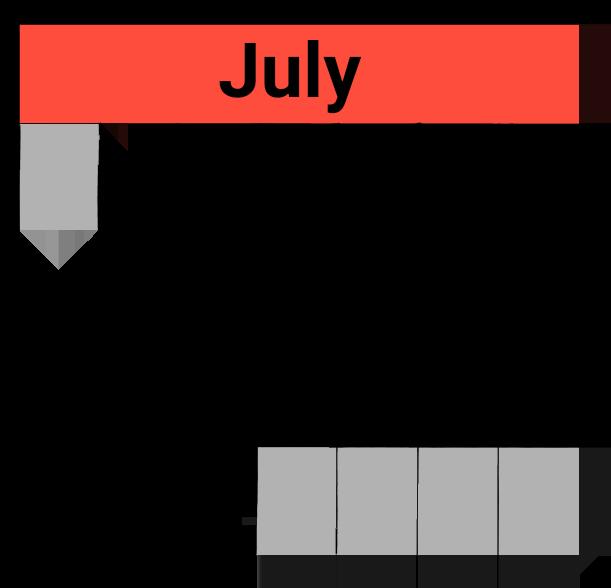
| Elijah Easton STAFF REPORTER
ll English classes must follow specific guidelines and learning objectives to meet academic goals. Starting in Kindergarten, the English curriculum focuses on learning foundational literacy skills and basic comprehension through picture books like “The Very Hungry Caterpillar” by Eric Carle or simple nonfiction such as books and magazines by National Geographic Kids. As students progress to middle school, they start to see more chapter books and books that connect with other subjects like science and social studies. Students also begin to read poetry, which initiates the exploration of different forms of language and expression. This is important as it exposes students to a deeper understanding of complex issues, allowing them to develop critical thinking and better knowledge of the world around them.
As students transition to high school, there is a large emphasis on critical reading and analyzing the books they read. According to the 2020 Minnesota Academic Standards in English Language Arts by the Minnesota Department of Education, one crucial standard in high school reading is that students must “read critically to comprehend, interpret and analyze themes and central ideas in complex literary and informational texts.” This is
why in high school, especially in Mounds View, it is common for English classes to incorporate Socratic seminars on the books read in class — it allows students to analytically think back on the book they read and discuss different themes, ideas and literary devices used by the author.
“And
we discuss them, and then together as the department have an agreement.”
Lexi Runnals, English teacher
Curriculum-related books are chosen by in-house educators who consider many factors. For them, the books are required to be of the appropriate reading level and interesting to students, in addition to fulfilling educational requirements. Furthermore, the school tries to include diverse authors and perspectives so that the experiences of every student are represented. This means that the reading material is educational, relevant and inclusive.
In this selection process, teachers are key decision-makers. “The team, whichever English teachers are teaching that particular course, will make some recommendations about texts they might want to add or





swap out to the department,” said Lexi Runnals, English teacher. “And we discuss them, and then together as the department have an agreement.”
“Usually, the meeting every week at the end of a unit will involve a discussion, how did it go? Are we still happy with it? What changes will we make going forward?”
Lexi
Runnals, English teacher
Not only do these teachers decide what books to add, they also constantly monitor how these books perform in their classes. “Usually, the meeting every week at the end of a unit will involve a discussion. ‘How did it go? Are we still happy with it? What changes will we make going forward?’” Runnals said. Suggestions about the content of the books can also arise from parents and members of the community. This way, the curriculum is constructed in a communal, respectful manner while also being academically rigorous.
The primary purpose of the selection of books is to develop
literacy, critical thinking and empathy in students so they can excel academically and participate actively in life. Thoughtful selection of books allows teachers to provide students with a wide variety of materials that aid in holistic development during and after school. This helps ensure reading is not just a text or assignment given, but instead an engaging and meaningful experience.
| Isabel Li and Gabriella Markegard STAFF REPORTERS
zo dyes — like Red 40, Red 3 or Yellow 6 — are synthetic, organic compounds that are widely used as coloring agents across various industries: textiles, foods, cosmetics and pharmaceuticals. Due to their versatility and cost-effectiveness, azo dyes have become indispensable in contemporary manufacturing processes, significantly contributing to the aesthetic appeal and marketability of numerous products in the United States since the late 1800s. However, there is heavy debate over negative health effects stemming from these synthetic dyes, with some consumers and advocacy groups calling for stricter regulations and bans of dyes from food products entirely.
Concerns for the safety of these dyes primarily stem from their ability to degrade into carcinogenic aromatic amines. These aromatic amines pose a heightened risk for various types of cancer. Also, azo dyes may be particularly harmful for children. According to a 2021 study from Turkey, they increase the
risk of allergies, ADHD, asthma, cytotoxicity and cancer. Differing azo dyes have differing health effects. Sunset yellow, also known as Yellow 6, which is commonly found in condiments, ice cream and other desserts, is a potential teratogen, meaning it contributes to birth defects according to a 2020 study done with chickens. Chicken embryos showed notable malformations: weirdly shaped bodies, shorter beaks and lighter weight. However, concrete evidence for its effect in humans remains unclear, as the study injected 14 times more Yellow 6 than the amount typically consumed by humans.
Also, environmentally, the release of these dyes into waterways can lead to water pollution. According to a review published in the scientific journal Nature Reviews Earth & Environment, over 80% of dyes are released into waterways untreated. These dyes affect aquatic life by blocking microorganisms’ access to sunlight, which prevents them from undergoing photosynthesis and obtaining
energy. Azo dyes’ resistance to biodegradation further worsens these environmental concerns.
While many azo dyes remain legal, their regulatory status varies significantly worldwide. Some azo dyes have been restricted in countries in the EU, India, China and other regions. For example, for all food prod-
On April 22, the FDA announced a plan to phase out food dyes completely by the end of 2026, giving manufacturers time to change their ingredients over the next two years
ucts containing azo dyes, EU countries are required to provide warning labels detailing their harmful effects. Going even further, Norway and Iceland have banned azo dyes almost entirely. Following these global trends, Robert F. Kennedy Jr., U.S. Secretary of Health and Human Services, has recently

expressed concerns regarding the potential health and environmental impact of azo dyes. On April 22, the FDA announced a plan to phase out food dyes completely by the end of 2026, giving manufacturers time to change their ingredients over the next two years. Earlier in the year, in January, the FDA also banned Red 3, which is used in food products like candy, medicine and desserts, due to numerous studies finding a correlation between the dye and cancer in animals.
The widespread usage of artificial, azo dyes in the U.S. has caused concern to many due to their potential environmental and physical negative effects. In accordance with these concerns, the U.S. government has enacted new legislation to begin the gradual phasing out of azo dyes, with the goal of removing them completely by 2026.
| Elijah Mattfield STAFF REPORTER
nitially walking into the theater, I held low expectations for the “Thunderbolts*” movie. After seeing constant comments referring to its similarity toa past Marvel movie “The Marvels,” which had an immensely negative audience review, I was ready for disappointment. “Thunderbolts*” was released on May 2, 2025 and provides a mixed theatrical experience with exceptional choreography and cinematography but with limited execution from the actors.
I did not have high hopes going into this film. The public’s opinion from their comparison of previous Marvel movies caused me to believe that this movie will be another let down from Marvel Studios, but this film surpassed these
negative implications exponentially. With a weak cast consisting mainly of “side characters” from previous Marvel movies, “Thunderbolts*” director Jake Schreier implemented a sense of an underdog story for these characters by granting them more of a story. Throughout the film, there are many references to how these characters are “nobodies,” but that changes near-
“The public’s opinion from their comparison of previous Marvel movies caused me to believe that this movie will be another let down from Marvel Studios.”
ing the end of the movie, with the creation of a team called “The New Avengers.” Florence Pugh, playing the new Black Widow (Yelena Belova), seems to be the focal point of this movie. Beginning the initial scene with Pugh and
| Mara Peacock PUZZLES EDITOR
3.5/5
n Lexington Avenue, a dessert store replaced the former POP Culture in Arden Hills. A cultural hub for Mounds View students, the new store would need to deliver great food and comfort to fill in the loss of frozen yogurt. Juice Time opened on April 25, and it has delivered the promise of new, exciting treats. Juice Time exists as a chain of stores across the United States and internationally, starting in the Middle East, but this is the first Juice Time in Minnesota.
Before I went to Juice Time, I wanted to go on their website to get a feel for their menu. The website features the whole menu of the store, which is quite lengthy. While I was in the store, the menu above the cash register did not include everything the store offered, so checking ahead was very helpful. The inside of the store was pretty spacious, with plenty of seating inside and outside and trendy music playing. The workers were all very friendly and seemed to be hard at work, as the store has been relatively busy since opening. The packaging of each product reminded me of Crumbl’s limited time Valentine’s Day packaging, with the cute red boxes to give an aesthetic look. My first impressions were very positive walking into the store, and the store captures a fun, almost cozy vibe.


orienting the film around her localizes the character development around only her and disbands the other characters. Lewis Pullman, playing Bob or Sentry, ironically played a character named Bob in an earlier film “Top Gun: Maverick.” Reflecting his previous film, Pullman shared characteristics between both of his characters by acting with innocence and nonchalance. Pullman’s performance is a significant point of this film. Near the beginning of the movie, there is a mystery behind his character, but he plays this essence so well that it shows his character has no
“Near the beginning of the movie, there is a mystery behind [Pullman’s] character, but he plays this essence so well that it shows his character has no knowledge of this mystery. ”
knowledge of this mystery. David Harbour, known for his role in “Stranger Things” as Alexei Shostakov, is the comedic side of the film. Harbour carries the jokes and laughter of this movie and I believe if he was not recognized in this film, the entirety of the movie would not feel the same.
Although most of the actors play their roles exceptionally, the environment could have had more variety. Walking out from the theater, I noticed that the film was mainly oriented around three different settings: somewhere inside of a vehicle, a facility and a specific location outside. The only points of variety was the finale of the film while implementing different points of each of the characters’ pasts. This sequence seemed anticlimactic, as we did not get to see the different parts of all of the characters and only got to see Yelena’s and Bob’s.
“Thunderbolts*” is an amazing cinematic experience filled with action and humor. From Schreier’s unique use of the underdog story of these characters to the transi-
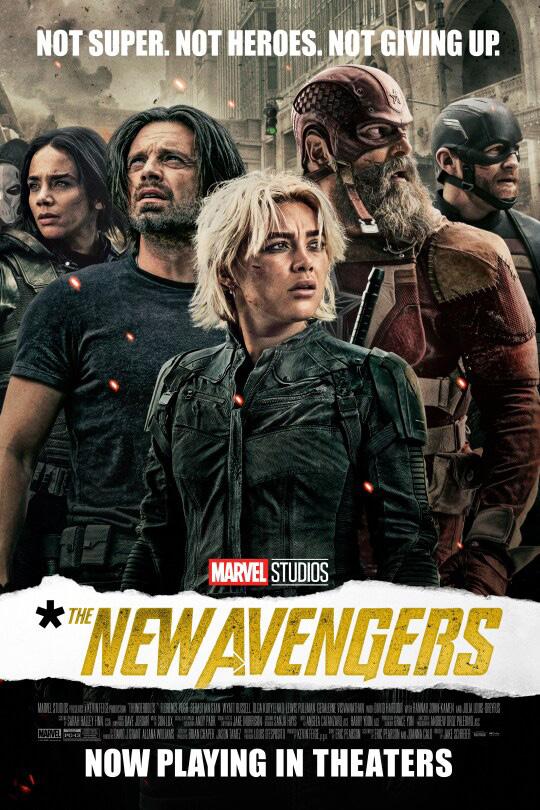
tion of these “new” characters into the next stage of the marvel universe after “Endgame,” Schreier executed the movie’s vision exceptionally well and exceeded my expectations. Although the experience was pleasing, many things such as the environment and the actor’s role execution could have been better. Ultimately, I was pleasantly surprised with this movie’s accomplishment. I give “Thunderbolts*” a 4.2 / 5.
I went to Juice Time on May 7 along with two of my friends, seniors Gabby Haake and Daria Kianian. Together, we spent about $45, not including tax. First, we tried the Kinder Berries for $9.99. The Kinder Berries were a delicious little snack, as they are made with only fresh raspberries covered in Kinder chocolate to create perfect bite-sized treats. Although the Kinder Raspberries had a great flavor, it was a little pricey for what the product was.
Not only was Ferrero Rocher a surprising flavor for me to see, but I felt that the menu featured many different tastes that are more rare to find.
Next, we tried the Kinder ice cream cup and the Ferrero Rocher ice cream cup, both in tiny sizes which cost $4.99 each. Both ice cream treats tasted great, but they didn’t exactly wow me. They were both classic vanilla bases with different toppings. That being said, my favorite item was probably the Ferrero Rocher ice cream, as I feel like it’s a more unique flavor to get for ice cream, and I think it’s a slightly underrated
candy. Not only was Ferrero Rocher a surprising flavor for me to see, but I felt that the menu featured many different tastes that are more rare to find.
We also bought a small Heart Attack, a best seller item, for $10.99. The Heart Attack was a milkshake made with strawberries, mangos and vanilla ice cream. The simplicity of the ingredients made the drink very refreshing and wasn’t too rich in flavor. Because it was a mostly fruit flavor, it tasted like a very sweet smoothie to me.
Finally, we tried the Dubai Chocolate Strawberry Cup for $13.99. I have tried a Dubai chocolate strawberry cup at a different restaurant before, so I had a good idea of what the cup would taste like at Juice Time. The pistachio cream paired with the ripe strawberries, kataifi and chocolate all came together well. Unfortunately, though the flavor was good, the chocolate covering the strawberries solidified rather quickly while I was eating it and made it less enjoyable. I had high hopes for this product, as it was a heavily advertised item, but my expectations might have been a little too high.
I rate Juice Time a 3.5/5. Overall, I think Juice Time was a flavorful experience, but it was pretty expensive compared to other shops in the area. I do think Juice Time provides an
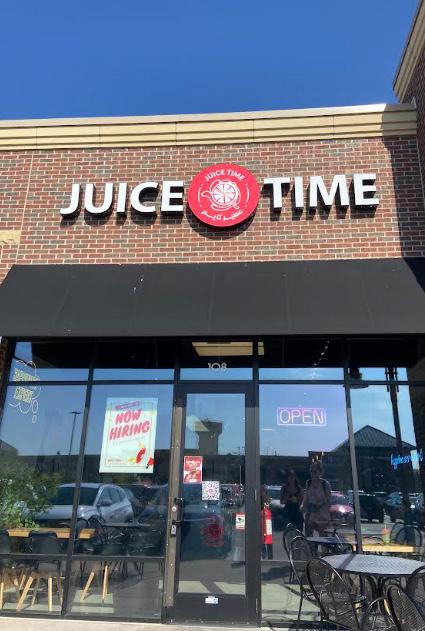
easily accessible opportunity for Mounds View students to get fun, trendy desserts. I would definitely consider going back, as the extensive menu offers a fresh opportunity for different desserts anytime you go.
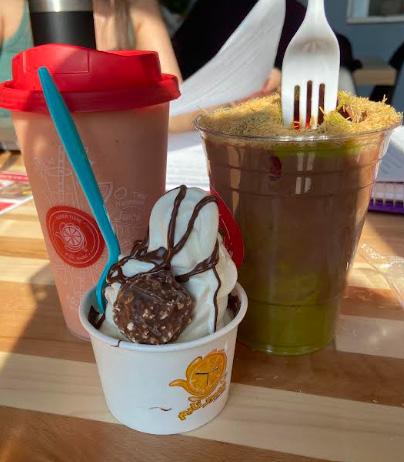
| Sidharth Sharma Online EIC
Rowing is traditionally strongest on the East and West Coasts, where most of the nation’s top prospects come from. Yet, from the less typical rowing environment of Minnesota, sophomore Andy Vizecky has emerged with nationally recognized talent.
What began as a pursuit motivated by scholarship opportunities quickly grew into a genuine passion for Vizecky. Encouraged by his mom, he started in a “Learn to Row” program. Here, Vizecky started by training on ergometers, also known as a rowing machine, then switched to barges, which Vizecky says “is impossible to flip in and allows you to get your technique down first.” After a year and a half at his first club, he moved to the more competitive Lake Phalen Rowing team, where he was exposed to higher level of competition and had opportunities to national and international regattas, which are competitive rowing races, that helped him develop his skills.
Training and competing in the Midwest presents unique challenges, particularly due to the limited availability of elitelevel local competition. “You don’t necessarily have competition that competes at that same level,” Vizecky said. To compensate, Vizecky and his crew travel out of state to face tougher competition.
He also maintains a rigorous training schedule, often rowing twice a day during the summer. During these times, Vizecky stays focused on his mindset. “You can always find that last 5%, and being able to find that last percent really separates you from the people who want to succeed and the people who are fine being a couch potato,” Vizecky said.
“You don’t necessarily have competition that competes at that same level”
Andy Vizecky, sophomore
Now in his fourth season, Vizecky’s accomplishments are impressive. The Head of Charles regatta is one of the most prestigious competitions around the world, with multiple teams competing and hundreds of thousands of fans cheering them on. In 2024, Vizecky and his partner won this regatta. “I won Head of Charles in the double last year … that was a super big deal for me and my doubles partner,” said Vizecky. This year, Vizecky is determined to continue. “Hopefully this year we’ll set a course record at the Head of Charles,” he said. That won’t be his first course record.
Vizecky already holds two course records in the single, including one from the Head of Hooch Regatta in Tennessee, a prestigious race including teams from all over the nation.
Despite these obstacles, Vizecky has risen to become one of the nation’s top sculling prospects, which is propelling the boat using two oars. He’s currently training with the United States under-19 national team for the World Championships in Lithuania. For this competition, Vizecky will be rowing the quad, differing from the single and double he usually rows and changing the areas of focus. “I’ll be in a quad, still sculling like doubles or singles, but with more people, so it requires a lot more refined technique to maximize the speed of the boat,” Vizecky said. This deviates from his training regime from the single and the double, as success now depends on coordination, timing and the ability to move as one.
Looking ahead, Vizecky hopes to continue rowing at the collegiate level and eventually represent the U.S. on an even bigger stage. “I am going to continue to train hard, continue making the national team and move up through their systems,” said Vizecky. By moving through the system, Vizecky has sights set on the Olympics.
| Gloria Liu STAFF REPORTER
ince the age of two, senior Brett Swenson has been wrestling competitively. This commitment from such an early age has allowed Swenson to continue his academic and athletic career as a D1 wrestler at the University of Minnesota Twin Cities. Over his 16 years
of wrestling, Swenson has dedicated countless hours to wrestling training, ranging from an hour and a half to two hours every day. Practices include a warm up, drills and pressing. Swenson chose to commit to the UMN because of his admiration for the facilities, coaches,

overall program and proximity to home. He hopes to continue working hard and level up his competition and athletic rigor in college. His most fond memory of his high school wrestling experience are his two state championships.

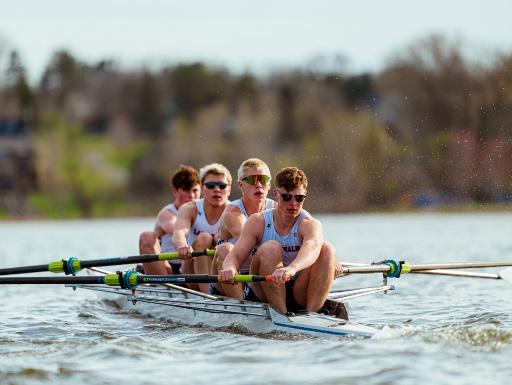


ommitted to Northeastern University for Division 1 diving, senior Tyler Ostrom looks forward to continuing her sport in college. She started her diving career in seventh grade, where she joined club diving at the Minne-
sota Diving Academy. Later in eighth grade, she joined the Mounds View High School Swim and Dive team. While Ostrom drew interest from other colleges like the University of Rhode Island and University of San Diego, she chose Northeastern University because she fell in love with the campus and the city of Boston.
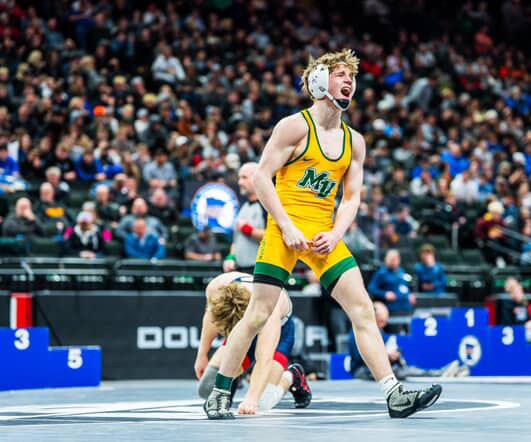
As a political science major, Ostrom also loves the co-op program and believes it will be good for her major. The biggest thing Ostrom looks forward to doing as a college athlete is being able to continue her sport and find community on campus. She noted that her biggest supporter and inspiration is her older sister, who also does D1
diving at the University of Connecticut. “I feel like she inspired me a lot to dive in college, and seeing how fun it was for her, that’s why I wanted to do it. I look at her and all the progress she’s made and that helps me a little bit,” said Ostrom.

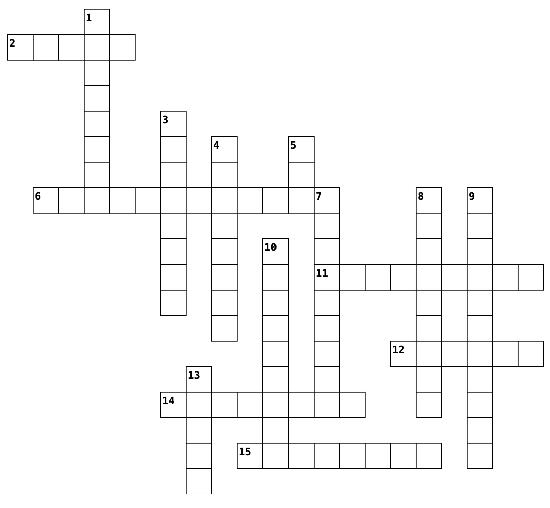



2. The company where Family and Consumer Science teacher Julie Coopet has judged gymnastics since 2013, abbreviated
6. Work that Mounds View High School does over summer break
11. School production GirlEASE held a pop up at for three days
12. Senior Tyler Ostrom’s biggest diving inspiration
14. A satirical new outlet started at the University of Wisconsin in 1988
15. Last name of the Mounds View school therapist
1. Type of satire where humor is used to make fun of an event or a person in a comedic way
3. Last name of the “Thunderbolts*” director
4. Name of the seminars which English classes use to discuss and analyze books
5. Synthetic organic dyes used as coloring agents
7. State where Spanish teacher Katie Womack is planning to move to
8. One of the three financial components of the personal finance curriculum, along with investing and and financial goal-setting
9. A Best Seller milkshake made with strawberries, mango, and vanilla ice cream
10. Country where the Under-19 Rowing Team World Championship is taking place
13. The average length of the conclaves since 1900, in days
